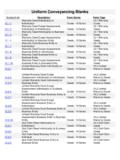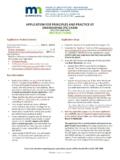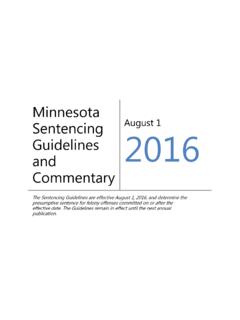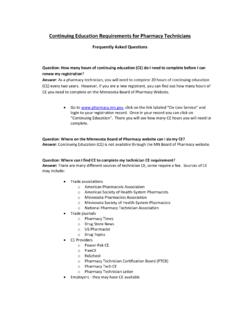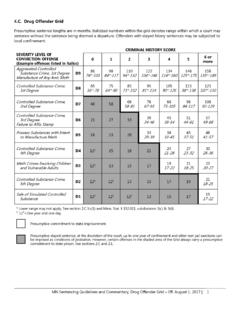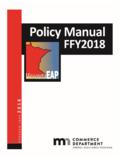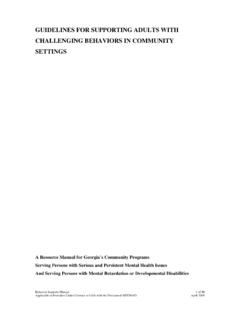Transcription of That's why they’re investing in schools to ensure that
1 Governor Walz and Lieutenant Governor Flanagan are working to make Minnesota is the best state in the country for each and every child to grow up. That's why they re investing in schools to ensure that students receive a world-class education, expanding access to pre-K, child care, and paid family leave, and prioritizing health care and supports for our youngest Minnesotans to ensure that families have the resources they need to succeed. Expand Access to Prekindergarten Access to high-quality prekindergarten benefits children from all backgrounds, especially children in low-income families.
2 This investment will fund more than 6,000 new public pre-K seats through a mixed delivery model requiring a combination of school-based programs (40%), Head Start (30%), child care centers and family child care programs (30%). The investment also extends the duration of programming for existing pre-K seats. This expansion, which in total could serve more than 23,000 eligible young learners, supports the Governor and Lieutenant Governor s Due North Education Plan goal of ensuring that every child receives a high-quality education, no matter their race or zip code.
3 The program would ensure ease of navigation and choices for families, as schools and communities work together to promote high-quality, cohesive early learning systems. Make Child Care More Affordable for More Minnesota Families Significant investments in child care assistance will provide long-term stability for providers, working families, and their children . The proposal will help thousands of providers stay open and provide stable care so families can work and children can thrive. While changes last year made improvements, the Walz-Flanagan proposal will ensure financial predictability for child care providers and improve their capacity to meet challenges such as the pandemic.
4 This proposal increases provider payment rates to the federal standard covering more of the costs of providing care and increases access to affordable child care for 15,000 families and 30,000 children . Eliminate Waiting Lists for Child Care for Eligible Families Child Care Assistance helps many eligible, low-income Minnesotans who need assistance paying for child care, but often times, the waiting lists for these child care slots can be up to two years long. Governor Walz and Lieutenant Governor Flanagan know that Minnesota families who are eligible for child care assistance cannot afford to wait.
5 Fully funding the Basic Sliding Fee Child Care Assistance Program will eliminate waiting lists and improve access to child care for Minnesota families and children . Right now, funding for Basic Sliding Fee assistance is capped, so families who are eligible sometimes must wait to access child care. The Walz-Flanagan proposal will allow Basic Sliding Fee child care assistance to provide help paying for child care to all eligible families and children and do away with waiting lists, where 500 to 8,300 families have faced delays over the past decade.
6 Full funding will allow Basic Sliding Fee child care assistance to serve about 16,000 Minnesota families including 32,000 children . Support Child Care Providers Affected by the Pandemic The Walz-Flanagan Budget to Move Minnesota Forward includes funding to stabilize child care providers and programs experiencing extreme financial hardships as they continue to navigate the COVID-19 pandemic. The pandemic has worsened Minnesota s child care shortage, burdening providers with difficulties including lost revenue and higher costs amid a shortage of workers.
7 With a quarter of Minnesota families lacking reliable access to child care, the Walz-Flanagan Administration is proposing continued financial support and extension of funding for local child care support services, including technical assistance for child care providers, training and recruitment of qualified staff to work in the child care sector, child care shared services alliances, and support for provider business practices through technology access and supports. These investments will result in more Minnesota families with access to affordable, quality child care.
8 Expand Early Learning Scholarships Early Learning Scholarships increase access to high-quality early childhood programs for young children with the highest needs to support the development of young children and provide connections for families. In an effort to promote a cohesive early childhood system that can support families all the way through kindergarten entry, the Walz-Flanagan proposal shifts the focus of the scholarships to prioritize 0 3-year-olds in the highest need populations. The proposal nearly triples the current amount spent per year on direct scholarships to families, reaching an additional 10,000 children per year.
9 Provide Paid Family and Medical Leave The Walz-Flanagan Budget to Move Minnesota Forward creates a Paid Family and Medical Leave Insurance program. Right now, too many Minnesotans, especially those in lower-wage jobs, must make the unfair choice between a paycheck and taking time off work to care for a new baby or a family member with a serious illness. This can lead to significant economic instability for families during some of their most challenging times. The creation of this program is necessary to support businesses, ensure more equitable economic opportunities for Minnesotans, retain more women in the labor force, and positively impact the lives of children .
10 Support Families with Sick and Safe Leave The COVID-19 pandemic has reminded us how critically important it is for people to stay home from work when they are sick. Workers who go to work sick risk spreading illness to coworkers, customers, and the public. But too many Minnesotans don't have access to paid sick leave and are forced to choose between going to work sick and paying their bills. The Governor and Lieutenant Governor s proposal would ensure workers can accrue up to 48 hours per year of paid sick leave for when they need to recover from an illness, go to a medical appointment, care for a child during a school closure, or get care and assistance due to domestic abuse, stalking, or sexual assault.
